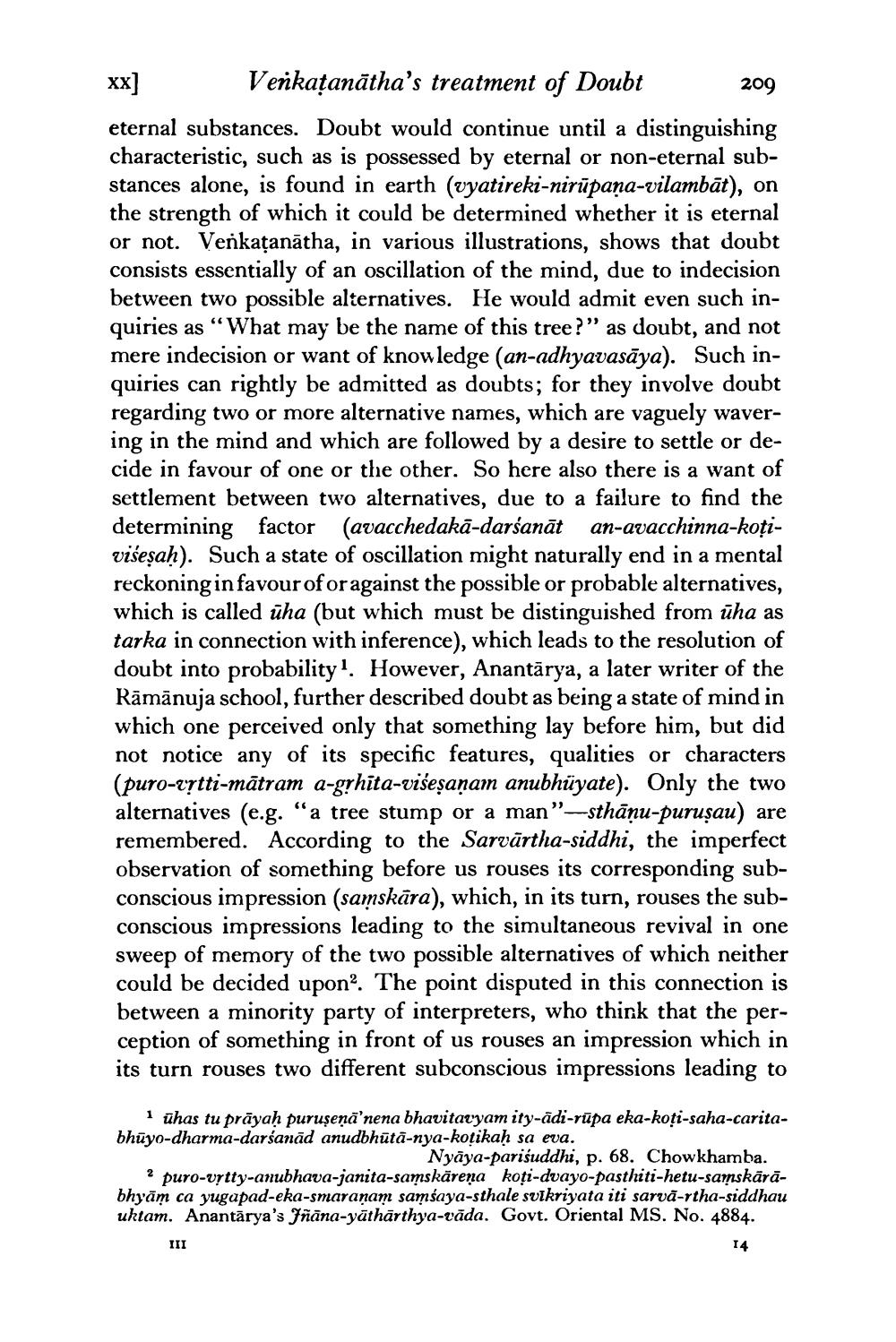________________
xx] Venkațanātha's treatment of Doubt 209 eternal substances. Doubt would continue until a distinguishing characteristic, such as is possessed by eternal or non-eternal substances alone, is found in earth (vyatireki-nirūpana-vilambāt), on the strength of which it could be determined whether it is eternal or not. Verkațanātha, in various illustrations, shows that doubt consists essentially of an oscillation of the mind, due to indecision between two possible alternatives. He would admit even such inquiries as “What may be the name of this tree?” as doubt, and not mere indecision or want of knowledge (an-adhyavasāya). Such inquiries can rightly be admitted as doubts; for they involve doubt regarding two or more alternative names, which are vaguely wavering in the mind and which are followed by a desire to settle or decide in favour of one or the other. So here also there is a want of settlement between two alternatives, due to a failure to find the determining factor (avacchedakā-darśanāt an-avacchinna-koțivišeșaḥ). Such a state of oscillation might naturally end in a mental reckoningin favour of oragainst the possible or probable alternatives, which is called üha (but which must be distinguished from ūha as tarka in connection with inference), which leads to the resolution of doubt into probability. However, Anantārya, a later writer of the Rāmānuja school, further described doubt as being a state of mind in which one perceived only that something lay before him, but did not notice any of its specific features, qualities or characters (puro-rịtti-mātram a-grhīta-višeṣaṇam anubhüyate). Only the two alternatives (e.g. “a tree stump or a man"-sthāņu-purusau) are remembered. According to the Sarvārtha-siddhi, the imperfect observation of something before us rouses its corresponding subconscious impression (samskāra), which, in its turn, rouses the subconscious impressions leading to the simultaneous revival in one sweep of memory of the two possible alternatives of which neither could be decided upon?. The point disputed in this connection is between a minority party of interpreters, who think that the perception of something in front of us rouses an impression which in its turn rouses two different subconscious impressions leading to
1 ühas tu prāyaḥ puruşeņā'nena bhavitacyam ity-ādi-rūpa eka-koti-saha-caritabhūyo-dharma-darśanād anudbhūtā-nya-kotikaḥ sa eva.
Nyāya-parisuddhi, p. 68. Chowkhamba. 2 puro-urtty-anubhava-janita-samskārena koti-dvayo-pasthiti-hetu-samskārābhyām ca yugapad-eka-smaranam samsaya-sthale sulkriyata iti sarva-rtha-siddhau uktam. Anantārya's Jñāna-yātharthya-vāda. Govt. Oriental MS. No. 4884.
III
14




